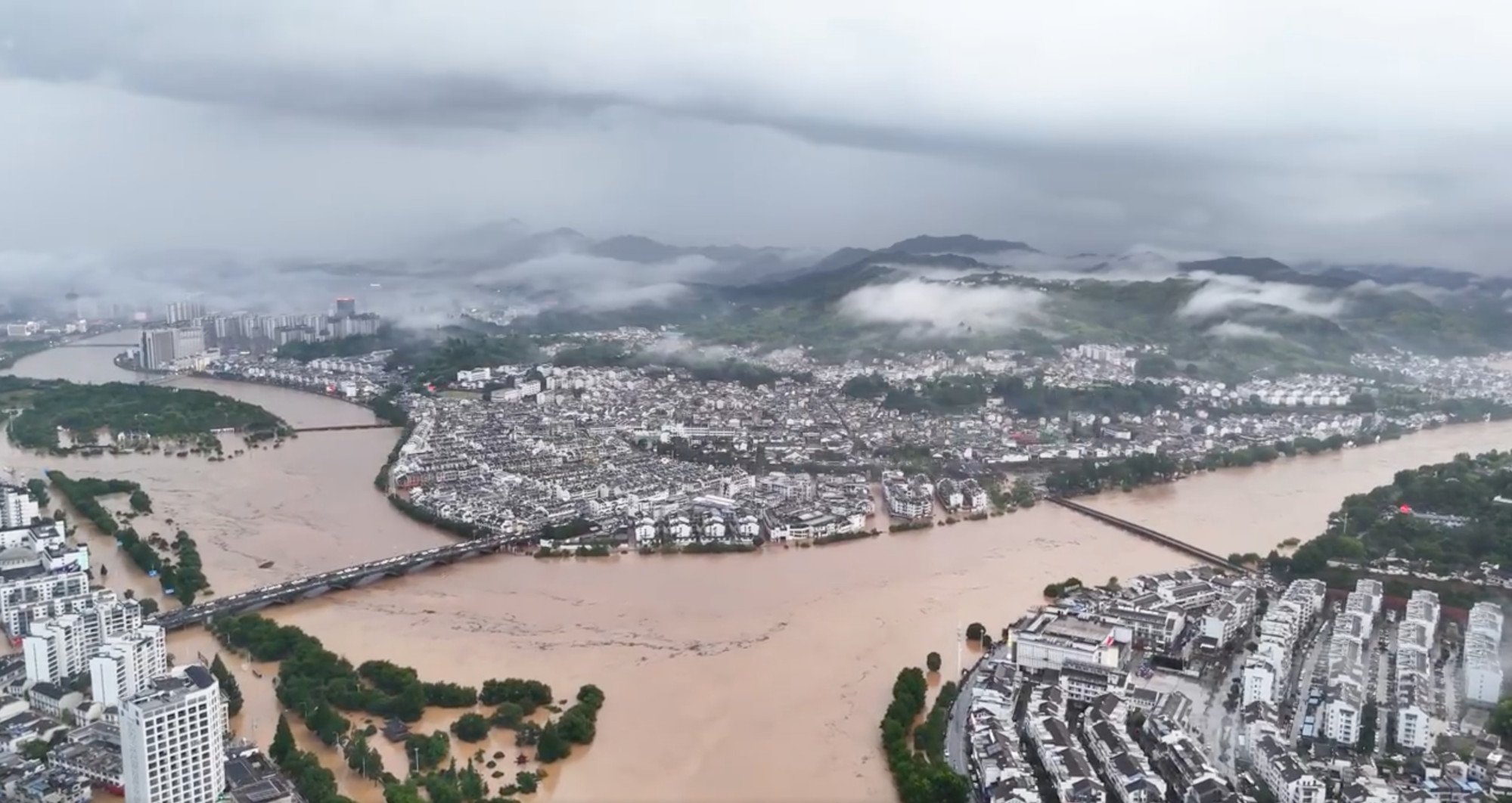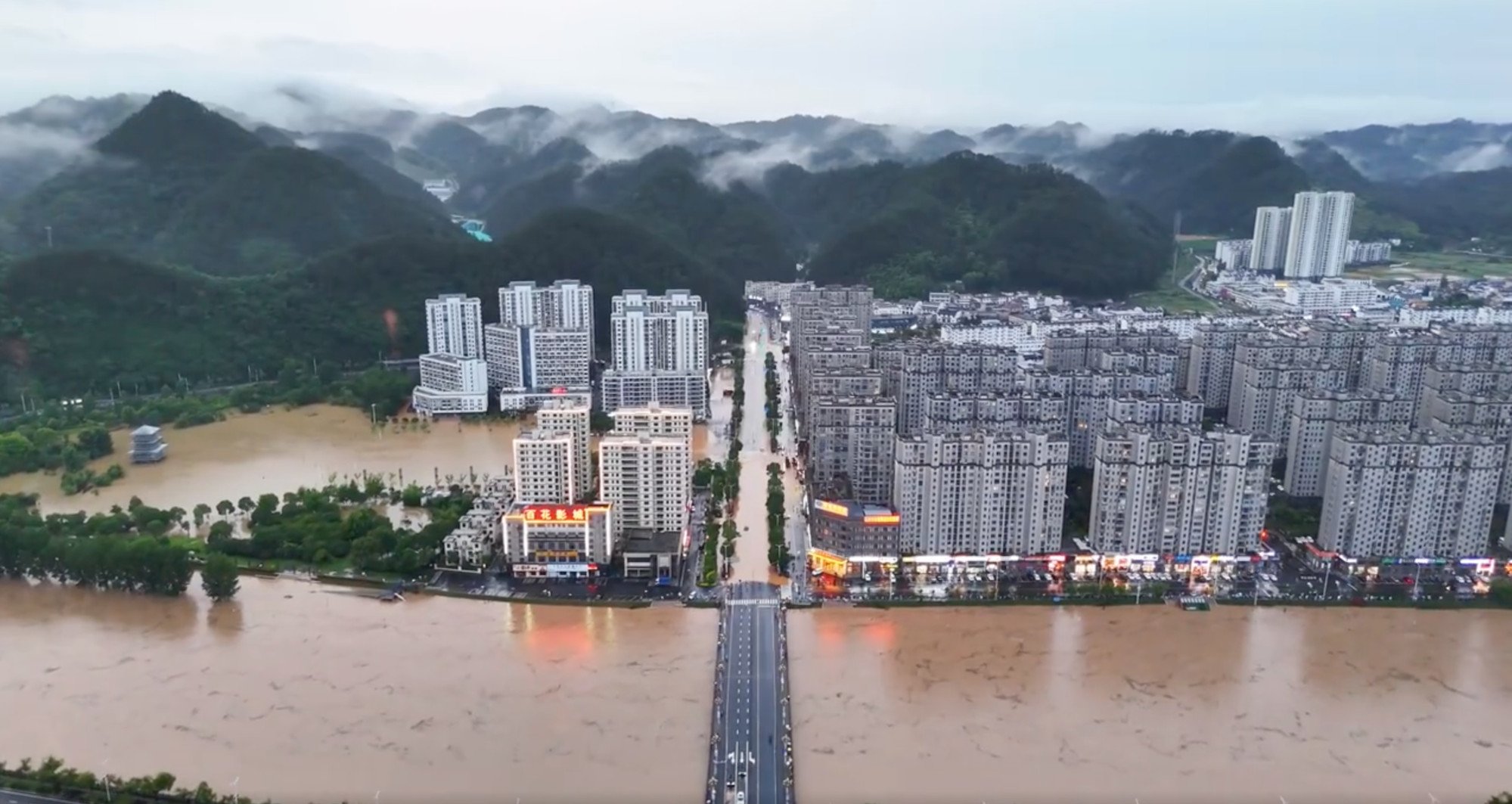A bridge was destroyed, several main roads were closed and cars were seen floating down the streets of eastern China’s historic scenic destination Huangshan as heavy rainstorms moved north from the southern provinces, bringing severe floods.
More than 10,000 people were evacuated from their homes on Thursday as rain pounded the city, named for its spectacular Yellow Mountains, in Anhui province’s south.

On Thursday afternoon, the Huangshan weather bureau issued a rainstorm red alert – the most severe warning in China’s four-tier system – with predictions that multiple towns in the area could expect more than 16cm (just over 6in) of rain per hour.
Do you have questions about the biggest topics and trends from around the world? Get the answers with SCMP Knowledge, our new platform of curated content with explainers, FAQs, analyses and infographics brought to you by our award-winning team.
Huangshan’s flood and drought prevention headquarters had raised the emergency alert response to level 2 earlier that day, instructing government bureaus to keep a close watch on the weather, as well as for signs of landslides and floods.
By the time night fell, 179,000 people had been affected by the floods, according to the Anhui Daily. A total of 27 houses collapsed and another 592 were damaged, causing a direct economic loss of 500 million yuan (US$68.8), it said.
Rescue teams in fire trucks and rubber boats reached more than 2,400 villagers trapped in the flood and evacuated 10,976 people. Nine provincial roads and 41 village roads were closed, halting 170 bus services. Ferry operations were also suspended.
According to the newspaper report, repairs have already begun on roads and electricity lines. Patrols have also been increased around schools and hospitals, rivers, reservoirs and other sites that could be risk of geological disasters.

In Chakou, home of Taiping Lake in Huangshan’s easternmost Shexian county, a bridge in Hengguan village was destroyed by the rising river, an official told Jimu News. Staff were stationed around the area to close affected roads and evacuate residents.
One resident said that she saw flooded roads and rice fields when she drove into the village on Thursday. Afraid of being trapped, she abandoned her car and waded home through knee-deep water, only to find some of her sewing machines under water.
Huangshan sprawls over 1,200 sq km (746 miles) over the Yellow Mountains’ 70 peaks and features hundreds of well-preserved ancient villages, with countless relics, traditional Hui-style architecture and wooden ancestral halls dating to the Ming dynasty (1368-1644AD).
The Anhui weather bureau said the rains are expected to continue for another 10 days and suggested that corn, rice and soybeans should be planted when possible during breaks in the weather. Measures should also be taken to prevent fields from flooding, it said.
Rainstorms have been moving west and north in the past few days, after devastating southern China. Hundreds have been left homeless by the resulting floods in Guangdong and Fujian provinces.
Meanwhile, extreme drought warnings have been issued for northern and central parts of the country, with local governments demanding that water is preserved as a priority for homes and livestock.
More from South China Morning Post:
- South China’s Guilin city hit by worst floods since 1998 devastation
- New York, London could ‘show China the way’ to a climate-proof future
- China’s south bears brunt of rains with at least 9 dead and hundreds homeless
- Extreme weather hits China, bringing drought to some areas and flooding further south
- Chinese crops at risk as extreme drought warning issued for central and northern areas
For the latest news from the South China Morning Post download our mobile app. Copyright 2024.





